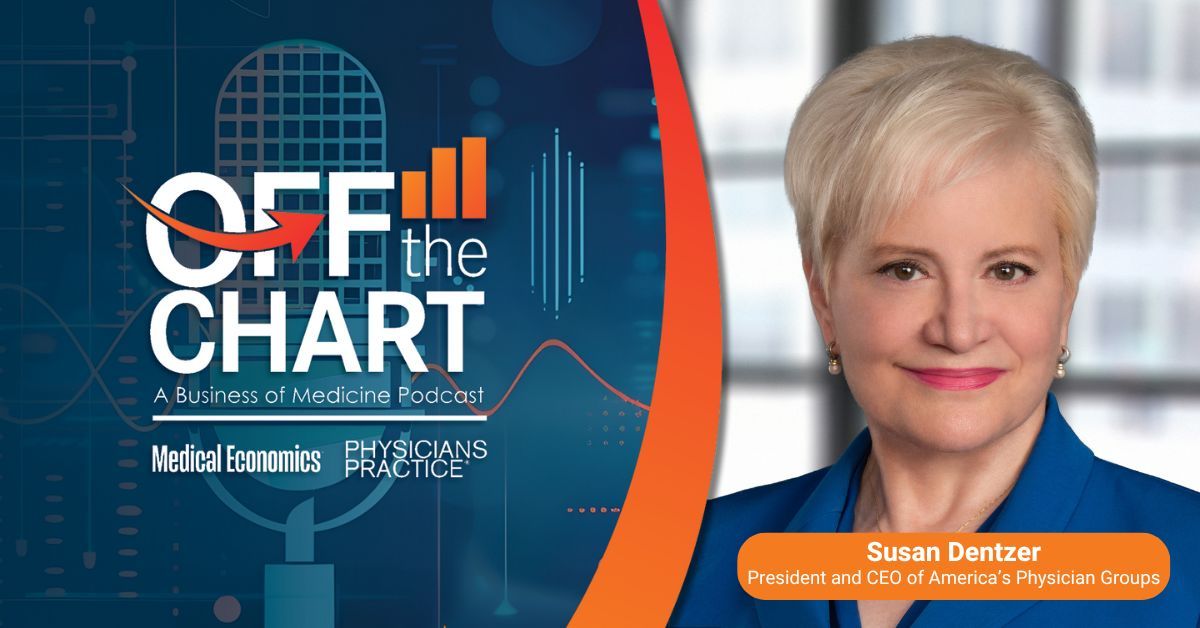News
Article
Medical Economics Journal
Can independent practices stay afloat amid waves of industry consolidation?
Author(s):
What's driving consolidation in health care and what it means for the future of your practice
Health care consolidation: ©Somram - stock.adobe.com

The days of independent primary care practices, once a bedrock in the communities they served, are rapidly fading. Like many aspects of the health care industry in the United States, consolidation is making fundamental changes to what primary care looks like now and how it will function in the future. Larger corporate entities are buying up more and more independent practices, be they hospitals, health systems, insurers, private equity groups or even larger medical practices.
According to a 2022 report by the American Medical Association, the percentage of physicians in private practice dropped to below 50% for the first time, in contrast to the 61% reported a decade earlier. A 2024 Physicians Advocacy Institute survey puts the number of physicians employed by a corporate entity at nearly 78% today. PAI also found that a majority (58.5%) of medical practices are now owned by hospitals, health systems or other corporate entities. Private equity’s purchase of medical practices across all specialties rose from 816 practice sites to 5,779 between 2012 and 2021, according to the National Institute for Health Care Management Foundation.
Primary care is not the only sector experiencing this wave of consolidation. Across the broader health care industry, mergers and acquisitions have become a common strategy to enhance efficiency, expand service offerings and negotiate better reimbursement rates from insurers. For example, Kaufman Hall reported that in 2023, there were 65 hospital and health system mergers, up from 53 in 2022. These consolidations aim to create integrated networks that can better manage patient care across the continuum, from preventive services to specialized treatments.
Primary care practices are especially valuable because they can direct patients to in-system specialists and services. However, as small practices are absorbed, there are concerns about the potential loss of personalized care and the erosion of the physician-patient relationship, and many of the supposed benefits of consolidation have proved elusive. Prices don’t always come down, quality of care doesn’t always increase, and the administrative burden on physicians is as cumbersome as ever.
The search for efficiencies is driving consolidation
The idea behind consolidation is simple: take disparate entities and eliminate redundancies to create efficiencies and cost savings. Patient care will be less fragmented and produce better outcomes.
“Many also say that providers would really benefit from having many of the administrative issues that they have to deal with on [an individual] basis taken off their plate, and a consolidated system allows for more seamless patient interactions,” says Joseph R. Betancourt, M.D., M.P.H., president, The Commonwealth Fund.
But like many things in medicine, money plays a significant role. With flat Medicare reimbursement rates and many private payer contracts tied to Medicare’s fee schedule, we have a health care system facing rising costs that are rapidly outstripping revenue increases. Health care leaders see consolidation as a way to survive –– the bigger you are, the more power you have in negotiations with payers, providers and suppliers.
Anders Gilberg, senior vice president of government affairs, Medical Group Management Association, says that primary care practices are desirable to buyers because they can both provide a steady stream of referrals to other parts of the health care system and help control costs at the patient level.
“They want to control the origins of the costs, which are largely at the primary care level,” says Gilberg. “If you can keep patients healthy, keep them out of the emergency room [and] keep them out of the hospital, you can capture a large cost savings and share it back with the doctors.”
Consolidation has allowed some physicians to keep their compensation competitive or close to inflation, whereas practices that remained independent might have some ancillary income but do not have that additional subsidy from a larger corporate owner, says Gilberg.
Because controlling the total cost of care is imperative to maximizing savings for these corporate entities, health systems are being driven to offer health plans, and health plans are in some cases buying primary care practices, further streamlining the health care system.
Independent practices also face more regulatory challenges. For example, Gilberg says that most practices that are not part of a more extensive system do not carry large cash reserves because of the tax penalties they would face. So when a major event happens, like the February cyberattack that disrupted the entire health care payment system for months, independent practices are at a severe disadvantage compared with larger entities with large reserves.
As consolidation continues, these larger entities gain more control over the entire local or regional market, making it difficult for independent practices to survive. The Federal Trade Commission, which is tasked with making sure these mergers are not creating monopolies, rarely rejects consolidation efforts. Betancourt says that only 13 mergers have been rejected in the last few years when upwards of 200 could have been, and Gilberg points out that in some markets, a dominant payer might control 75% to 80% of the market.
Ultimately, many physicians are swamped in red tape from government regulations and payer demands, leading them to just give up and sell.
“The larger systems have the professional staff, and they have the billing staff that might take that out of the hands of the physicians, so that’s a big relief for a lot of them,” says Gilberg.
Empty promises?
Consolidation was supposed to deliver greater efficiencies for both physicians and patients, saving everyone money while improving care. But to date, the wins have been few and far between.
“Many times, the benefit of economies of scale and reduced expenses are cited as reasons for consolidation,” says Jeffrey Davis, D.O., board of trustees member for the American Osteopathic Association. “However, in many cases, increases in expenses from top to bottom have led to reduced or negative profit margins leading to strategic planning for consolidation to prevent bankruptcies or provider closures. While at times consolidation leads to reduced expenses and improved profit margins, rarely does the cost of care reduce, because inflation of medical supplies, medications, electronic health records costs, salaries, benefits, etc., continues to result in increased costs to provide the same care.”
Quality is also at risk, and patients are not benefiting from the mergers.
“As we see more consolidations, we are not seeing real improvements in quality,” says Betancourt. “If anything, it’s level or decreasing quality, and we are no doubt seeing increases in prices. I would argue, and this is based on my experience, that … it is becoming increasingly confusing and frustrating for patients to figure out where to go and how to navigate the system.”
He adds that for providers, there has been a loss of agency, where doctors no longer feel like they have a voice in or control over where these big health systems are going, and the administrative burden they so desperately wanted to escape often follows them into the larger system.
Kelly Kenney, CEO of the PAI, says that their research shows that employed physicians continue to find critical administrative tasks highly burdensome. “However, 69% of these physicians report having little to no involvement in practice management policies or decisions.”
Physicians that are part of
larger systems can’t escape the paperwork, despite their hope for the contrary.
“There’s still a lot of administrative burden that comes with just care in general,” says Betancourt. “So [although when] you enter a consolidated system it might decrease some of the administrative burden, the practice of medicine is leading to just generally more administrative burden with the electronic health record. If I’m in a consolidated system or if I’m independent, I’m still going to have 90 messages in my in-basket.”
Kenney says employed physicians are concerned about key aspects of their clinical autonomy and an overall decline in their relationships with patients.
“The policies that corporate employees implement to keep costs down and profits up often conflict with physicians’ ability to make the best clinical decisions for patients,” says Kenney.
Gilberg points out that some consolidation is not always bad, especially when it means quicker test results and better access to specialists in a lower-cost ambulatory care setting. His concerns are on the motives of those investing in health care.
“I think we have to keep an eye on things like third parties who aren’t in it for the long term, like investors who are there to create efficiencies and then leave in five years,” says Gilberg. “I think that’s going to be critical to ensure that patient care isn’t affected by that from a negative standpoint. And if the aim of insurers, for example, buying practices is to control the total cost of care, we don’t want to end up in an environment where care is so restricted that quality suffers in favor of cost.”
Can independent practices survive?
In a rapidly consolidating health care market, independent practices may appear to be in danger of being swallowed up or running out of business. But experts say that although it is not easy, there is hope. Just as there are still small hardware stores competing in a market dominated by big-box retailers, independent practices can still compete against corporate medicine.
“The primary care physicians I see [who] are successful, they might partner with a third party to help them offset the risk involved with value-based care arrangements,” says Gilberg.
The third parties help provide resources for the practice to succeed in value-based care while protecting the practice from too much downside risk in exchange for taking a share of the upside when the practice performs well.
“It’s harder and harder if you are a primary care physician and you don’t have some sort of value-based care arrangement and you are just fee for service because fee-for-service rates aren’t going up,” says Gilberg.
Betancourt agrees, saying, “There are things independent practices can do together, with their payers or with other partners that can help them focus on these things, which are of critical importance.”
Another path to remaining independent is to change the practice model.
“Direct primary care and concierge medicine have grown in popularity over the last 5 to 10 years, and more and more physicians who want to maintain their autonomy and independence from consolidation have chosen these vehicles,” says Davis. “Electronic health record and quality measure-reporting mandates came with significant increases in the cost of maintaining a traditional independent medical practice. These factors both played a role in physicians looking at opportunities to consolidate and also to turn to nontraditional practice styles.”
Consolidation of medical practices may slow simply because there are fewer and fewer practices left to acquire — and those that are left may not attract much interest.
“Some of the remaining independent practices may not be financially attractive to the larger corporate entities due to their location or patient base,” says Kenney. “For instance, those physicians in low-income areas that treat large numbers of Medicaid patients might not attract corporate buyers.”
Experts say that there may be consolidation among the consolidators or a shift in who is buying practices, which could include independent practices buying other independent practices to survive, but one way or another, they face a challenging path forward.
“Overall, these trends have been difficult to escape,” says Kenney. “Physician payment has not kept up with inflation. It remains to be seen if the economics of corporate ownership will continue to spur acquisitions. At some point, private equity owners will look to sell practices. If current trends continue, insurer-owned entities like Optum may own even greater numbers of practices in the United States.”
Given these economic pressures, the issue of size becomes even more pronounced. “With the economic pressures right now and the lack of real progress on administrative simplification and standardization in this country, it just feels like ‘bigger’ is more able to handle those pressures right now,” says Gilberg. “When those abate, my hope is that physicians will have options to remain independent, as opposed to either getting bigger as an independent practice or selling to an outside entity.”
See related sidebar: The retail fail - why retailers struggle in health care.
Newsletter
Stay informed and empowered with Medical Economics enewsletter, delivering expert insights, financial strategies, practice management tips and technology trends — tailored for today’s physicians.






